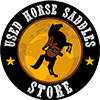Western Saddle Fit: Ensuring Comfort for Horse and Rider
When it comes to Western riding, proper saddle fit is paramount. Whether you’re a seasoned rider or just starting your equestrian journey, ensuring both you and your horse are comfortable is essential for an enjoyable experience. In this article, we’ll delve into the significance of proper saddle fit and provide valuable tips to guarantee comfort for both horse and rider.
Why Proper Saddle Western Saddle Fit Matters:
- Comfort: A well-fitted saddle ensures that both you and your horse are comfortable throughout your ride. Discomfort can lead to tension and resistance, making it challenging to enjoy your time in the saddle.
- Health: An ill-fitting saddle can cause soreness, pressure sores, and even long-term physical issues for your horse, such as back pain and muscle tension.
- Safety: Proper saddle fit is also a safety concern. An insecure saddle can slip or shift during riding, potentially causing accidents or injuries.

Tips for Ensuring Proper Western Saddle Fit:
Consult a Saddle Fitter:
If you’re uncertain about saddle fit, consider consulting a professional saddle fitter. These experts can assess your horse’s back and recommend saddles that match its shape and size. They can also provide adjustments or custom-made saddles if necessary.
Check the Tree Width:
The saddle tree, which is the frame beneath the saddle, should match the width of your horse’s back. A tree that is too narrow or too wide can lead to discomfort and soreness. Use a flexible curve or ask a saddle fitter to assess the tree’s width on your horse’s back.
Evaluate Shoulder Clearance:
Ensure that the saddle provides enough clearance for your horse’s shoulders. The saddle should not restrict the horse’s movement or cause pinching. Check for ample space between the saddle and the horse’s withers and shoulders.
Seat Size Matters:
Rider comfort is equally crucial. Choose a seat size that fits your body comfortably. A seat that is too small can lead to discomfort, while one that is too large can affect your balance and stability.
Consider Gullet Width:
The gullet is the channel beneath the saddle’s pommel that runs along the horse’s spine. Ensure that the gullet is wide enough to avoid pressure on the spine. A too-narrow gullet can cause discomfort and back problems for your horse.
Saddle Pad Selection:
The right saddle pad can also influence fit. Choose a saddle pad that complements your saddle’s fit rather than compensating for an ill-fitting saddle. The pad should be appropriate for your riding discipline and thickness should be adjusted as needed for saddle fit.
Regular Saddle Checks:
As your horse’s shape may change over time due to factors like fitness, age, or health, it’s essential to regularly check your saddle’s fit. Make adjustments or seek professional assistance if needed.
Trial Rides:
If you’re considering a new saddle, always take it for a trial ride before purchasing. This allows you to assess both your and your horse’s comfort and performance with the saddle.
In conclusion, proper Western saddle fit is the foundation of a comfortable and enjoyable riding experience for both horse and rider. Taking the time to ensure a good fit, seeking expert guidance when necessary, and regularly monitoring your saddle’s fit can contribute to the health, safety, and happiness of both you and your equine partner during your Western riding adventures.
